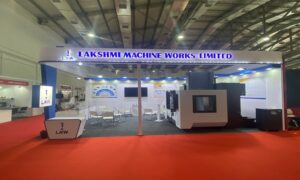Researchers at Oak Ridge National Laboratory (ORNL) demonstrated a first-of-its-kind smart wall that combines advanced manufacturing, building and power electronics innovation.
The prototype wall, called EMPOWER, is designed for interior use, demonstrates how an assembly of innovations serving as a room’s cooling system can reduce energy use, decrease peak time energy demand, lower energy utility bills, utilize renewable energy and maintain occupant comfort.
The EMPOWER wall, which measures 5-feet by 8-feet, was 3D-printed at the Department of Energy’s Manufacturing Demonstration Facility at ORNL using a unique infrastructure scale additive manufacturing system called SkyBAAM that prints concrete.
SkyBAAM has been described as low-cost, cable-driven, field deployable and can be adapted for any construction site. SkyBAAM eliminates the need for a gantry system commonly found in large-scale additive manufacturing systems. This can be set up within hours at a construction site with minimal site preparation.
Inside the EMPOWER wall is a thermal storage and active insulation system with a chiller that connects to the wall. Embedded pipes carry chilled water throughout the wall during low peak demand hours, cooling its interior temperature.
“Active insulation surrounding the thermal storage can vary thermal conductivity on demand,” said ORNL’s Diana Hun, a buildings researcher. “It transfers coolness stored in the interior of the wall to the occupied space when needed.”
This on-demand capability of the active insulation reduces electricity costs by lowering use of the heating, ventilation and air conditioning, or HVAC, system. The EMPOWER wall also uses a control method, called model predictive control, to optimise the operation of the active insulation and thermal storage based on the prediction of future conditions which can include weather or the occupant’s behavior.
Based the control predictions, the optimal charging/discharge rate for the wall and timing can be determined. The wall’s embedded sensors can then send a signal to the existing HVAC system to turn on or off.
Cookie Consent
We use cookies to personalize your experience. By continuing to visit this website you agree to our Terms & Conditions, Privacy Policy and Cookie Policy.















